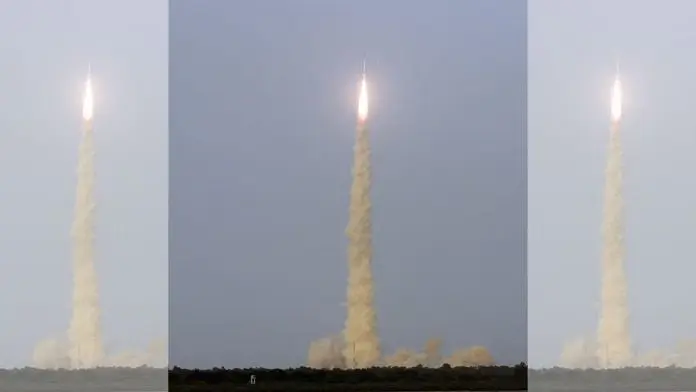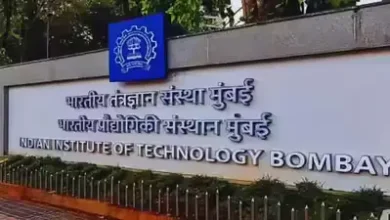ISRO Successfully Launches NISAR Satellite, World Most Expensive Earth imaging Satellite

Sriharikota (Andhra Pradesh) – The Indian Space Research Organization has successfully launched the NISAR satellite (NASA/ISRO Synthetic Aperture Radar), the most expensive civil Earth imaging satellite in the world. This historic event occurred on Wednesday at 5.40 pm IST. The Geosynchronous Satellite Launch Vehicle GSLV-16 lifted NISAR into orbit from Satish Dhawan Space Center, Sriharikota in Andhra Pradesh.
This $1.3 billion satellite represents a collaboration of historic proportions between ISRO, the Indian space agency, and NASA in the United States. The first satellite project to be undertaken by NASA and ISRO, this marks a significant milestone in the cooperation between these two space agencies. ISRO has confirmed that the satellite was placed precisely in its orbit after liftoff.
“Liftoff. Liftoff has been achieved! “GSLV-F16 successfully launched with NISAR aboard,” said an update by ISRO’s Official handle on X.
The Chairman of ISRO, Dr. V. Narayanan, expressed his immense excitement and pride over this achievement. “I’m extremely happy. He confirmed that NISAR was successfully and accurately injected into the orbit intended for it. Dr. Narayanan had earlier highlighted the importance of this event in an interview with NDTV. He said, “From those humble beginnings, where India depended on other countries for satellite technology, we now slowly occupy a leading role.” Two great nations have worked together to build an important satellite, and I am extremely pleased that our vehicle will launch it from Indian soil.
NISAR’s significance is not just in its technical capabilities, but in the fact that it was developed in partnership with two of the world’s largest space agencies. This collaboration brings together years of experience from NASA and ISRO to produce the most sophisticated Earth imaging satellite ever. The satellite, which is equipped with synthetic aperture radars in both L-bands and S-bands, will provide a unique capability of observation, including fine detail on the deformation and structure of land, as well as effects from rising sea levels. These data are crucial in helping to address environmental issues and strengthen climate change research worldwide.
NISAR was designed specifically to assess natural disasters and monitor Earth’s dynamic ecosystems. It also helps in improving land use policies. The unmatched precision of its imaging is expected to open up new possibilities in disaster management and resource allocation, while also contributing to the mitigation of climate change.
The mission will also help India achieve its ambitions to become a leader in the world of satellite technology. ISRO has seen rapid growth since launching its first satellite, Aryabhata, in 1975, with the support of Russia. It now marks milestones for a low-cost Mars mission and collaborations.
The successful completion of this launch is expected to open new opportunities for future collaboration between the Indian and U.S. space programs. It demonstrates India’s capability to handle major space ventures and enhances its ability to develop cutting-edge technology for use in space exploration and Earth observation.
ISRO’s growing leadership in satellite technologies aligns with the vision of India to become a major player in space exploration and to extend benefits to global challenges. NISAR is another shining jewel in its growing portfolio that demonstrates India’s progress towards bridging technological gaps.
ISRO
Indian Space Research Organisation is India’s space agency. It has its headquarters in Bengaluru (Karnataka). ISRO, which was founded in 1969, has been the driving force behind India’s space capability, with a focus on interplanetary missions and satellite launches. ISRO is known for low-cost and high-efficiency space missions. It has collaborated with international agencies and consistently advanced the limits of space technology.





